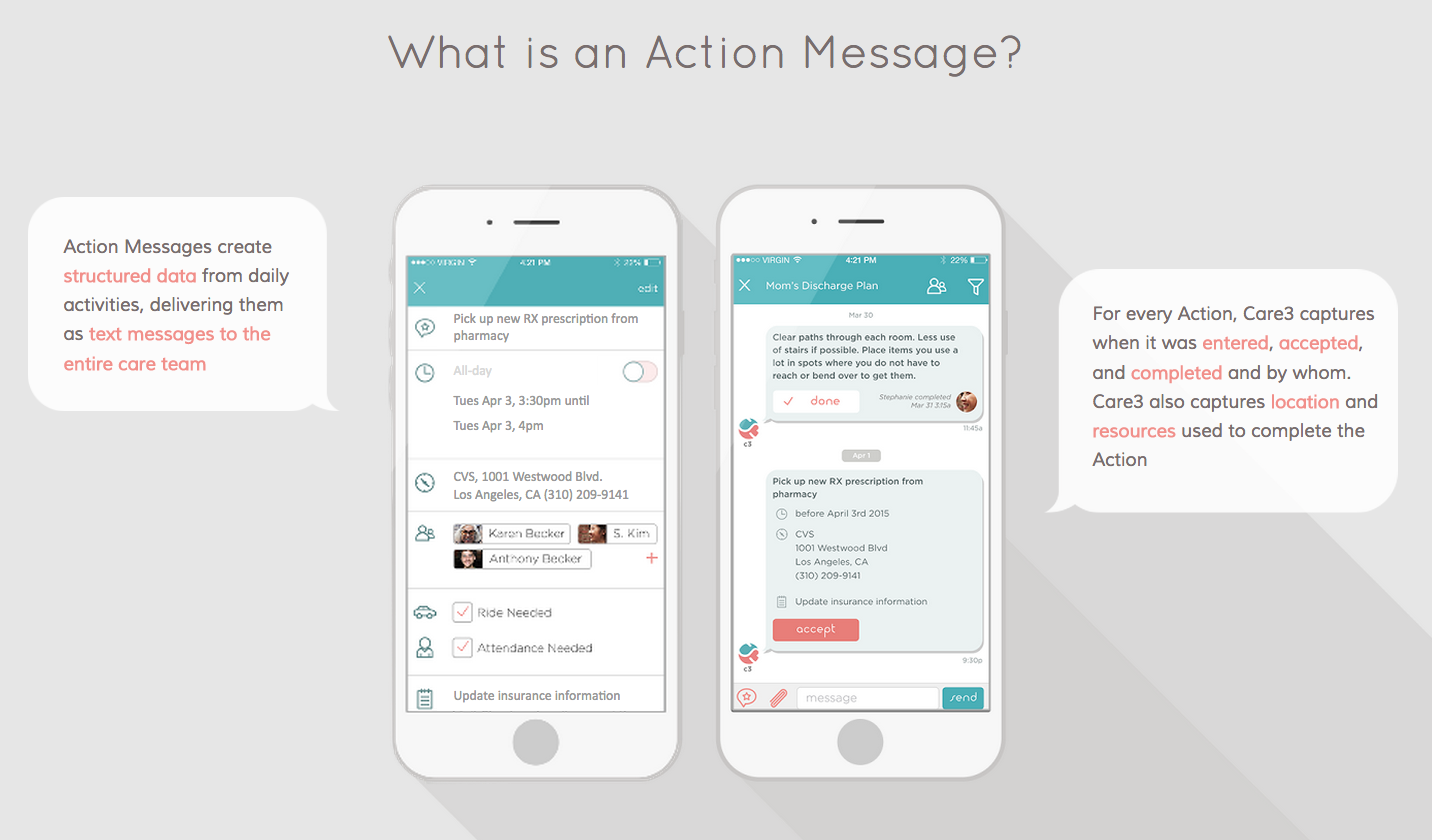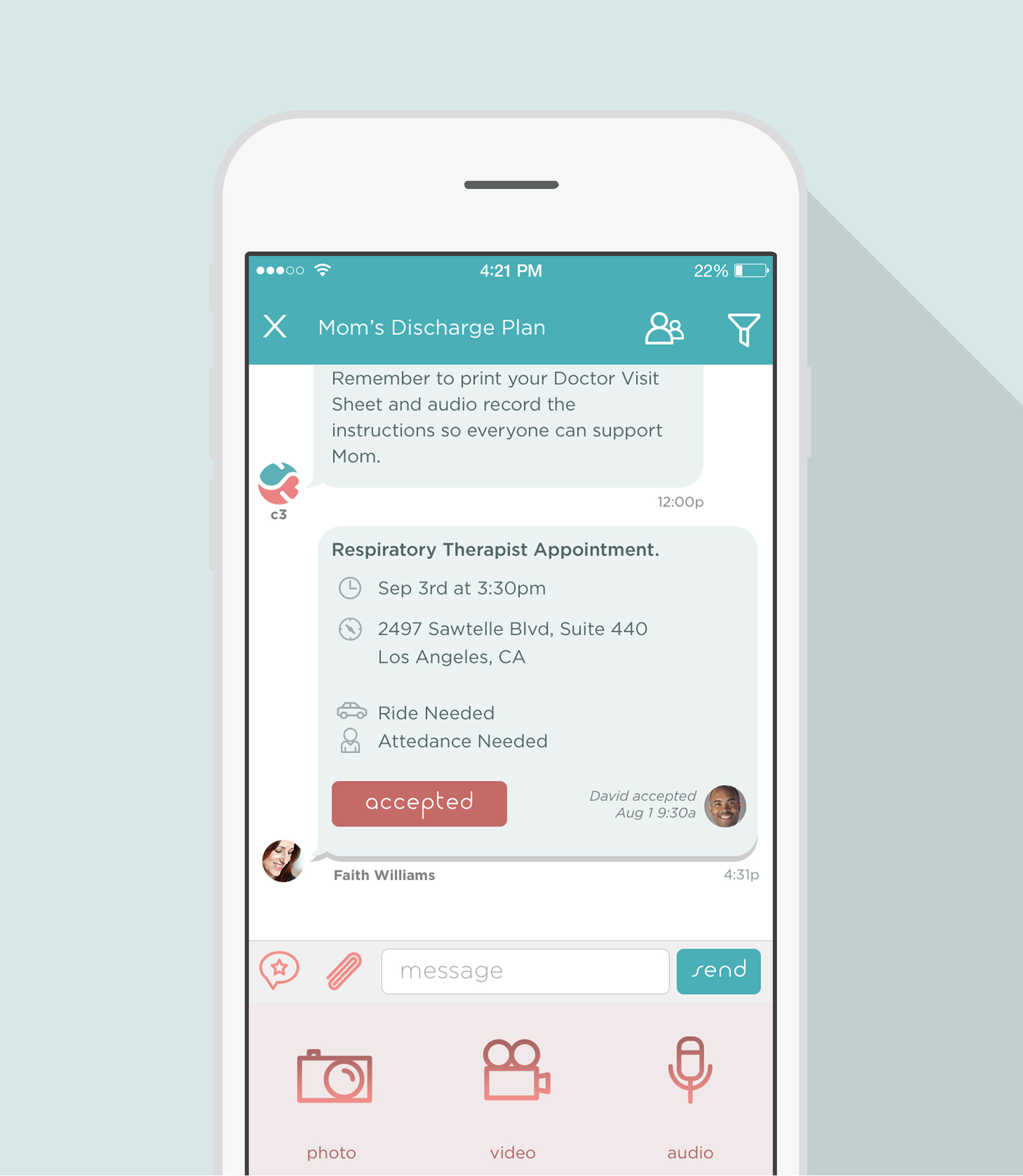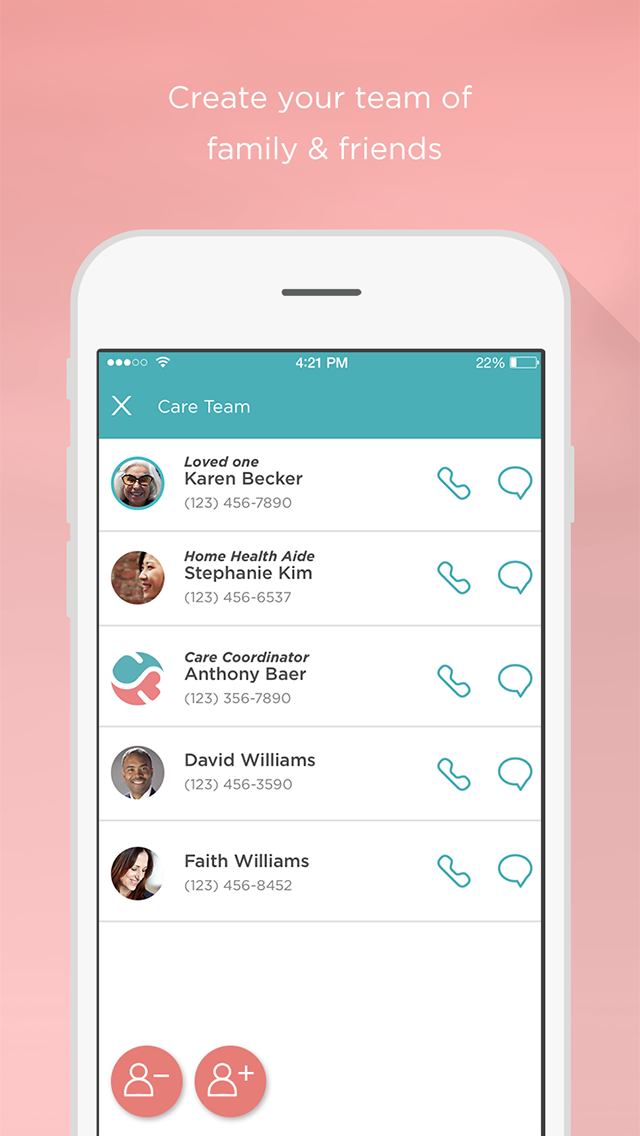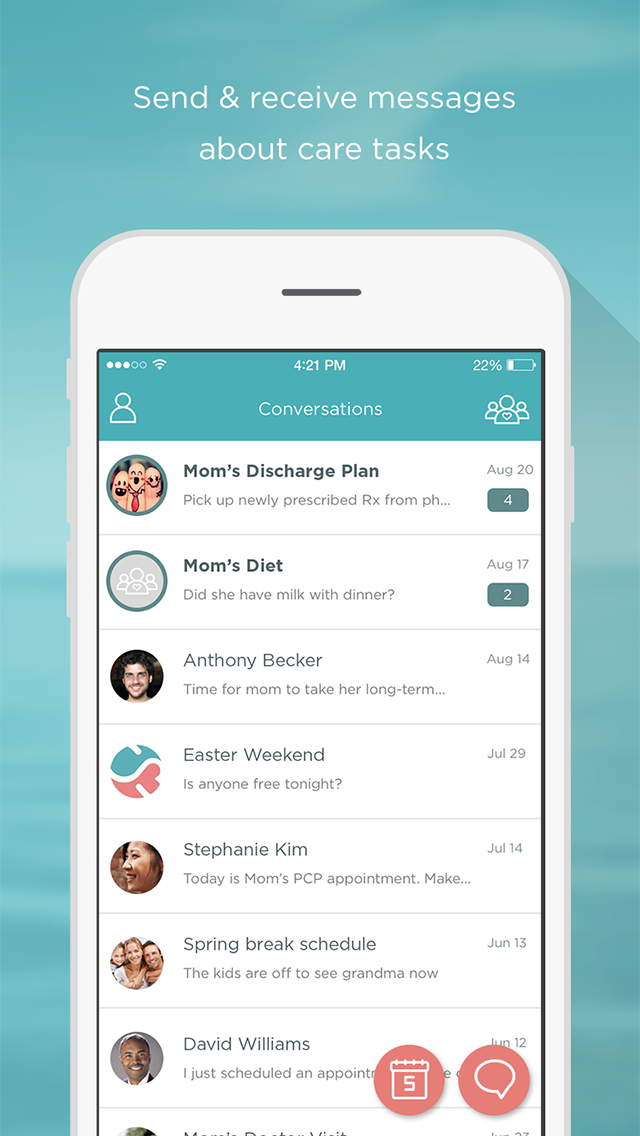Care3 News & Events
#Care3How2 - Can't Make the Pharmacy Run? What Now?
We’re spotlighting the different ways you can use Care3 to request help from your care team – from rides to social visits. Today we’re focusing on one of the most common errands for caregivers. How many times have you had to run to the pharmacy to pick up a prescription drug or an over-the-counter cold remedy for your loved one? And how many times has it been an inconvenience, given your busy schedule and the closing time of the pharmacy?
Recommended Actions • Give a Ride
• Visit Your Loved One
• Add Appointment
• Pick Up Medicine
• Get Answers
• Buy Something
• Do Something
• Give a Ride
• Visit Your Loved One
• Add Appointment
• Pick Up Medicine
• Get Answers
• Buy Something
• Do Something
Next time, instead of stressing about making it the drugstore between soccer practice and PTA, why not send out a request for help using Care3? Chances are, someone on your care team may be able to swing by and pick up Grandpa’s blood pressure medication. In addition, they’d likely be thrilled to lend a hand. Family and friends are always asking what they can do to help with Grandpa, right? This is one of the ways of answering that question and allowing others to pitch in with a clear, specific task.
Start by logging onto Care3 and clicking the Action Message icon in the Care Team conversation. Then enter the name of the medicine, the pharmacy, the pharmacy’s location and the time the prescription will be ready. In the “Notes” section, you may want to note the pharmacy’s closing time as well as anything else relevant, such as the expected price of the drug and the fact that the pharmacy already has all of Grandpa’s insurance information on file. Send off your request and receive a notification on your iPhone during soccer practice that your neighbor Ellen has volunteered. Click “Thanks” to show your gratitude and exhale knowing that it’s one less thing on your plate for today.
See how Action Messages get others to help? There’s still more you can do with them, though.
Take Action - 3 Amazingly Simple Ways to Get the Most Out of Every Doctor Appointment
Primary caregivers are typically the calendar keeper. That means keeping track of all manner of medical appointments, such as checkups, dental visits, annual mole checks, physical therapy sessions and more. Get organized – and keep your Care Team looped in – by using Care3 to schedule, coordinate and remember appointments for your loved one. Unlike a wall calendar, it can be consulted on the go by you and your care team, plus it comes with built-in reminders and a recording feature. An example helps to illustrate things.
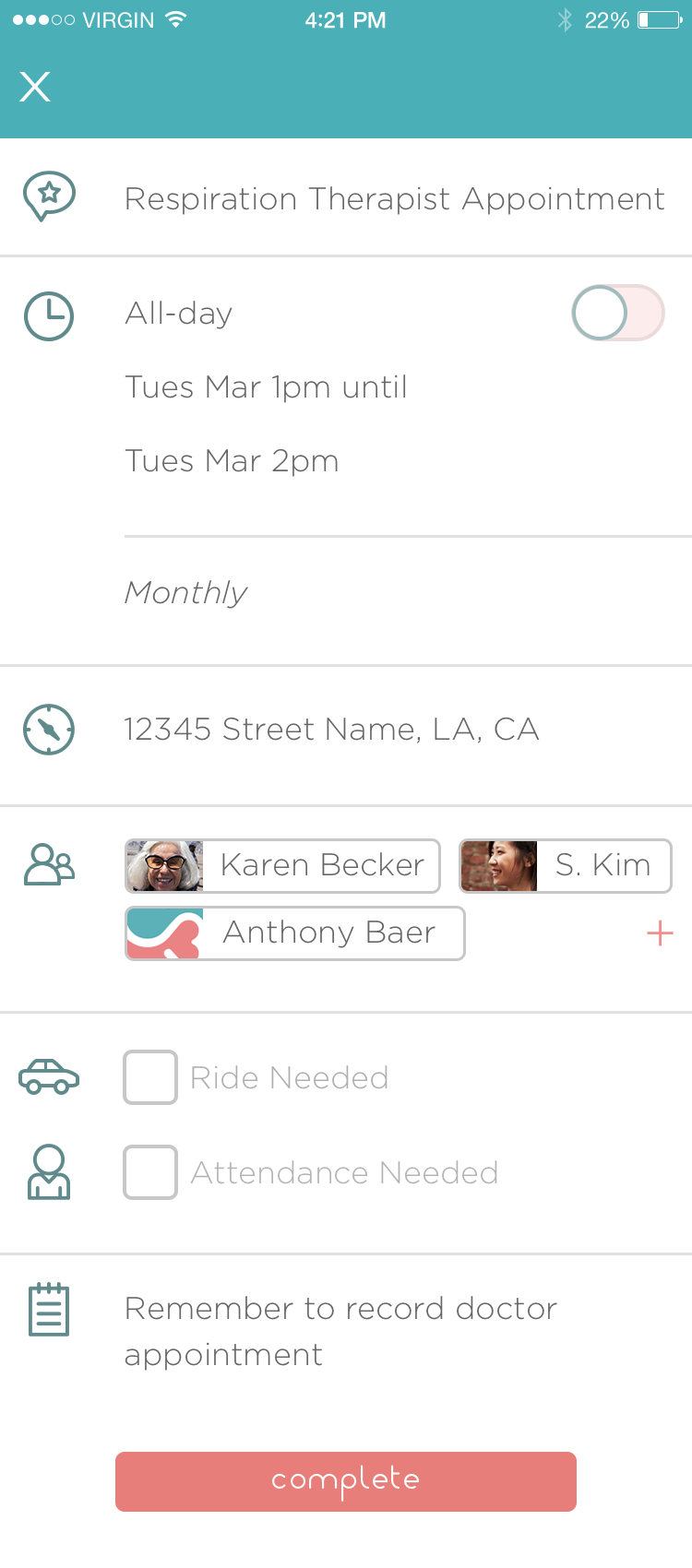 Let’s suppose you’re the primary caregiver for your 24-year-old son Dylan, who has a congenital disorder that is causing his kidneys to fail. He is currently in need of a transplant and living back at home. Many family members and close friends want to know how Dylan is doing and what his doctors are saying. By inviting those who care about Dylan to be part of your Care3 Care Team, you can keep everyone up-to-date using one centralized platform versus trying to communicate with everyone individually, which can be time-consuming and draining.
Let’s suppose you’re the primary caregiver for your 24-year-old son Dylan, who has a congenital disorder that is causing his kidneys to fail. He is currently in need of a transplant and living back at home. Many family members and close friends want to know how Dylan is doing and what his doctors are saying. By inviting those who care about Dylan to be part of your Care3 Care Team, you can keep everyone up-to-date using one centralized platform versus trying to communicate with everyone individually, which can be time-consuming and draining.
For example, Dylan has a transplant evaluation at a regional hospital next week.
1. Easily Notify your entire Care Team of the Appointment
You’d like to notify the care team that this long-awaited appointment has finally been scheduled, and you’d also like to let them know what you learn during the appointment. With Care3, both tasks are a cinch. Start by logging into Care3 and tapping the Action Message icon in your Care Team Conversation. You will then be prompted to enter all the pertinent details – such as the date, time and location.
2. Share the Goal of the Appointment with your Care Team
In the “Notes” section, you can note the fact that this visit is the critical first step in Dylan qualifying for a kidney transplant. Then, you can choose to make the appointment visible to everyone on the team or just the team members you select. (You can also make appointments visible only to you if desired.)
3. Record the Doctor's Instructions and Share with your Care Team
Flash forward to the day of Dylan’s transplant evaluation. If you have downloaded Care3 onto your iPhone, you can use it to record the doctor’s comments and instructions during the appointment. Start by asking the physician if it’s okay to record him or her. After you’ve gotten permission and logged onto Care3, click the paper clip icon at the bottom left in your Care Team conversation. Then tap the microphone icon to bring up the recorder. Then just tap the red square to start recording. Now you can relax and listen to the doctor carefully without having to worry about jotting down notes. Everything will be captured. As an added benefit, you automatically share the recording with your care team so that they can hear what the doctor said for themselves almost in real-time.
With Care3 Nothing is lost in translation, and everyone’s up to speed. Download now!
#Care3How2 - Party Time! Get Friends to Visit Your Loved One in an Instant
Care3 helps you organize your caregiving activities and share them with family and friends who want to help. In recent posts, we’ve discussed how you can use Care3 to coordinate a ride in just one tap using our exclusive Action Messages. Today we’re going to look at how Care3 can help you easily and quickly set up social visits, which can combat loneliness, isolation and depression as well as provide some downtime for you as a caregiver.
Recommended Actions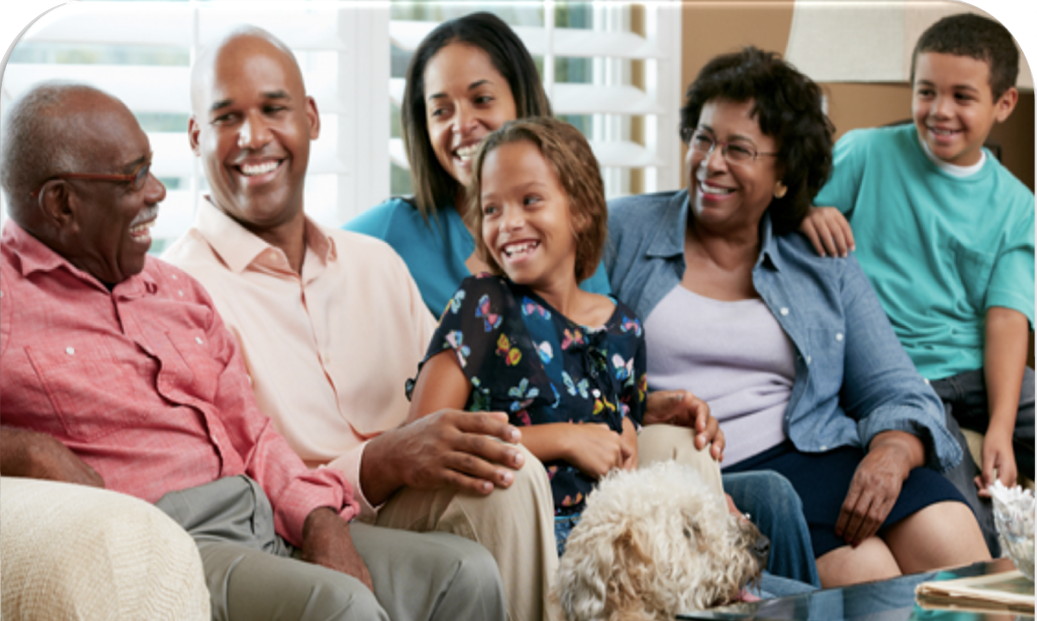 • Give a Ride
• Visit Your Loved One
• Add Appointment
• Pick Up Medicine
• Get Answers
• Buy Something
• Do Something
• Give a Ride
• Visit Your Loved One
• Add Appointment
• Pick Up Medicine
• Get Answers
• Buy Something
• Do Something
Imagine that your elderly mother, who’s known as Nana, lives with you and your family. You’ve noticed that she’s been a bit down lately. She’s mentioned several times that she has not heard from her siblings or old friends in some time. Even though Nana tires easily, you’ve seen how a short social visit can really lift her spirits. So you decide to arrange a get together for Nana next weekend. As an added benefit, you’ll be able to slip out during the visit to run some errands and enjoy a little personal time. Sounds like a win-win, no? Plus, with Care3, you know you can set up a visit in seconds.
Start by logging on to Care3 and tapping the Action Message icon in your Care Team conversation. You will then be prompted to enter all the details that folks need to know – such as the date, time and location. Add any other important information in the “Notes” section, such as the fact that the visit will be capped at two hours to keep Nana from getting overtired. Then, instead of sending this Action Message to everyone on the team, you may choose in this instance to select just Nana’s area siblings, old friends and former neighbors so that it’s a more intimate gathering of the people she’s been missing. Keep tabs on your iPhone as one or more people accept the Action and your idea quickly turns into a reality.
See how Action Messages can streamline your efforts? Next up on the blog, we’ll examine how you can use Care3 to track appointments.
#Care3How2 - Requesting a Ride is Easy
Welcome to our series called #Care3How2! In this series we show you how to do some of the most common care activities on Care3 and why our care-sharing app is far more efficient than email or other mobile apps.
Are you a caregiver who’s trying to do it all? Or a remote family member who’d like to do more – from either near or far? At Care3, we’ve learned that many caregivers would love to have some assistance, but they’re simply too busy and overwhelmed to call around and see who might be able to pitch in. On the flip side, we’ve found that family or friends are often ready and willing to help out, but in many cases, they just don’t know how.
This is where Care3 comes in. By assembling a Care Team that’s connected via our messaging app, Care3 users are able to create Action Messages for help that reaches all team members. Compared to multiple phone calls and emails, a Care3 Action Message is a highly efficient way to put the word out and find out quickly who can lend a hand. Team members can also text thank yous just like a normal text message. Everyone’s involved and supporting each other, whether or not they can help with that particular task.
Recommended Actions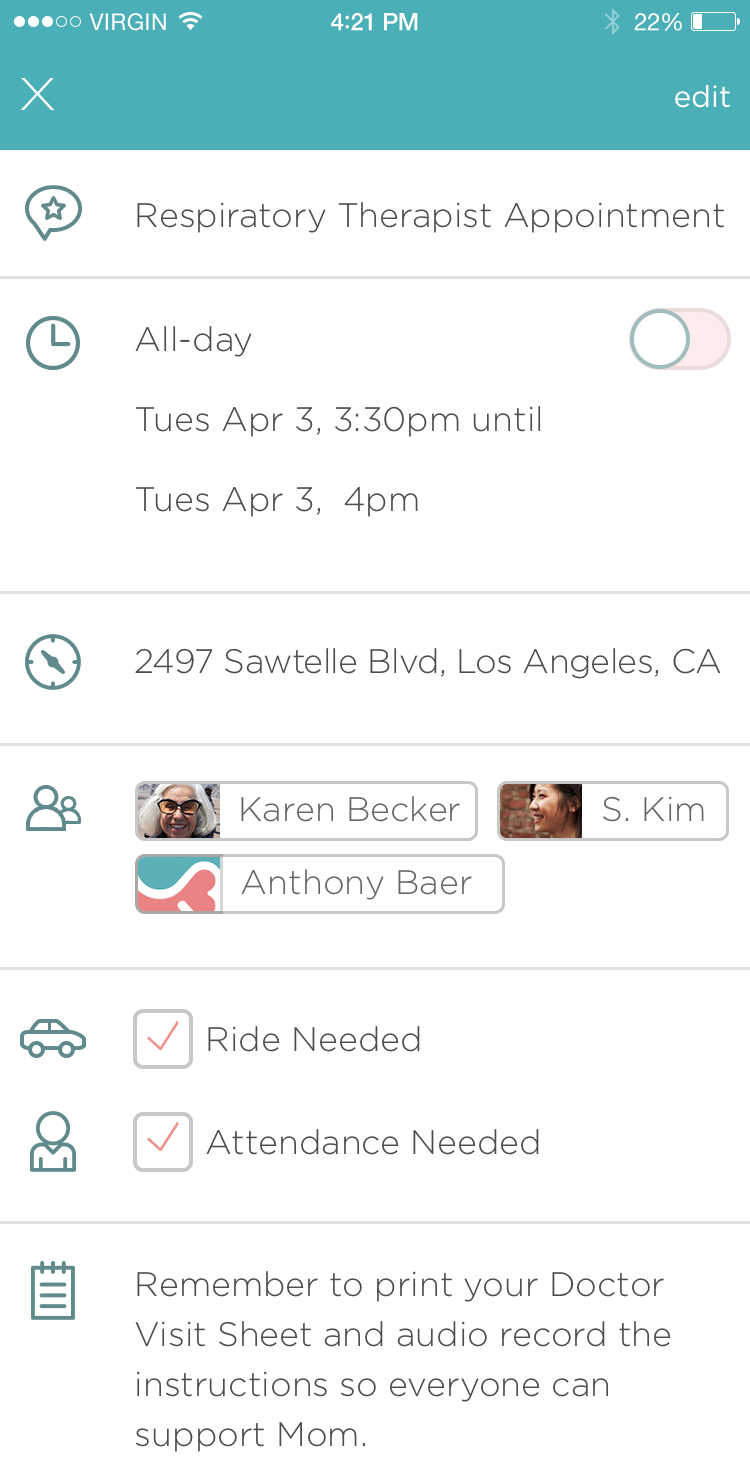 • Give a Ride
• Visit Your Loved One
• Add Appointment
• Pick Up Medicine
• Get Answers
• Buy Something
• Do Something
• Give a Ride
• Visit Your Loved One
• Add Appointment
• Pick Up Medicine
• Get Answers
• Buy Something
• Do Something
So let’s take a look at exactly how Care3 works – in this case, getting a ride for your loved one (or giving it!). Imagine you are a caregiver for your aging father, who lives with you in your home. Your father, who suffered a stroke and can no longer drive, needs a ride to an occupational therapy (OT) appointment on Thursday. The problem is, it’s at the same time as a conference with your daughter’s third grade teacher, and neither appointment can be easily rescheduled. While this would be a stressful problem if you have little to no assistance, it’s easily solved when you have a Care3 Care Team behind you.
Start by logging on to Care3 and tapping the Action Message icon in your Care Team conversation. You will then be prompted to enter all the details that your team members need to know to determine whether they can help – such as the date, time, location, and length of the OT appointment.
Here's where it's super simple. See that check box labeled "Ride Needed"? Just tap that box to add the check and everyone knows that your father needs a ride to the appointment. Add any other important information in the “Notes” section and select whether you want this message to go to everyone or not. (You can also send it to only selected individuals.) Fire off your clear, specific Action Message and receive a notification minutes later that your cousin Robbie can give your father a ride. Send a “Thanks!” message to show your gratitude and smile as you see that other team members are sending their thanks to Robbie as well. It feels good to work together!
Oh, and don't forget to record the OT instructions, either so everyone knows how to help your father, too!
Getting a better sense of how Care3 works? It's time to take action. Download Care3 now!
Caregiving - Love in Action
Caregiving is not a burden. We believe that caring for someone you love is a love in action. The stress most people associate with caring for a parent advancing in age or a special needs child comes from the uncertainty surrounding changing circumstances, not from the responsibilities of caregiving. In fact, we find that people want to be more involved but are limited often by distance, time, money, or other factors. This inability to contribute leaves many relatives and close friends feeling guilty and helpless. But what if pitching in to help the ones we love was easier? What if we could remove the obstacles time and distance place on our ability to lend a hand or show our support? What if you could make caregiving more social? That day has come.
It's time to change the perception of caregiving. It's time to take action! And Care3 will help you act.
Care3 uses Action Messages to share care tasks with supportive family and friends in your messaging conversation.
Here are some actions to get you started thinking. Each action can be completed by you, or you can get others to help. Trust that others around you want to take action also! Don't take it all on yourself. Share in action.
Example Actions:
• Get/Give a Ride • Visit Your Loved One • Set Appointment • Pick Up Medicine • Research Conditions • Buy Groceries • Help with Activities of Daily Living (ADLs)
It's time for some Action. It's time for Care3. Download now on the Apple App Store!
The New Normal: Caregivers as Leaders
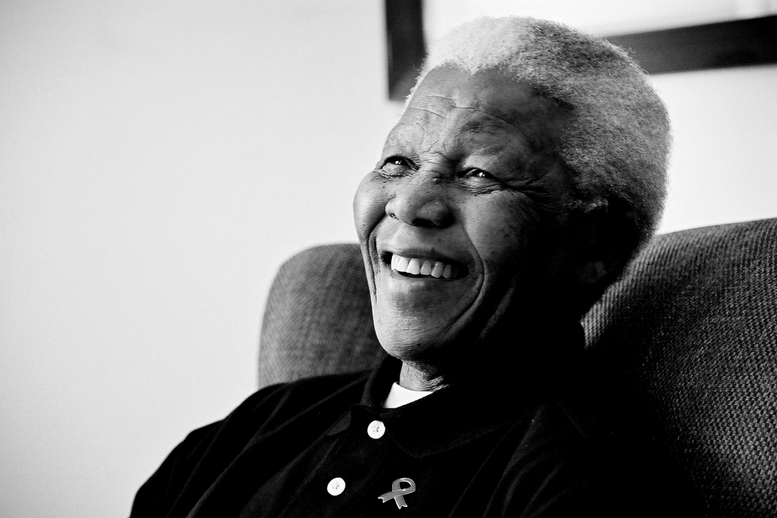 When a loved one is suddenly struck ill or has a catastrophic event, it changes the world--and without our permission. We are stunned into paralysis—shocked into disbelief—and even shamed into silence.
Becoming a caregiver thrusts you into a leadership position. People look to you for guidance, updates, and strength even though you feel the same feelings they do. Leaders are supposed to project an air of invincibility, right? Consider this excerpt from Nelson Mandela’s Leadership Lessons:
When a loved one is suddenly struck ill or has a catastrophic event, it changes the world--and without our permission. We are stunned into paralysis—shocked into disbelief—and even shamed into silence.
Becoming a caregiver thrusts you into a leadership position. People look to you for guidance, updates, and strength even though you feel the same feelings they do. Leaders are supposed to project an air of invincibility, right? Consider this excerpt from Nelson Mandela’s Leadership Lessons:
Show courage: Mandela was often afraid for his own safety and even his life. Yet, he never showed fear to either his compatriots or his adversaries, saying that a leader “must put up a bold front.”
One of the greatest leaders in world history recommends that we show no fear. A chink in the “bold front” armor may signal weakness, or worse yet, fear and doubt in whether the mission can succeed. So we keep quiet. Play it close to the vest. We never let our family or friends see us sweat.
The problem with that approach is that inevitably when others see that we are, in fact, human, it is such an anomaly that our family and friends think that the sky is falling. Showing vulnerability from time to time, sharing the experience with close family and friends, and rising above it can add to a perception of strength rather than take from it--and result in better health for your loved one.
When our loved ones get sick and need our help to recover or even live comfortably day-to-day, it’s important to talk about the challenges with people you trust—while also letting those around you know that everything isn’t perfect. This includes family members. You will need their help if you want to balance the responsibilities of caring for a loved one and maintaining the life you had already created for yourself.
Do what you do at work. Get your team (a care team) together, set a goal, make a plan, and lead. But talk openly about the challenges with trusted friends and family. Success in this mission means a healthy loved one and a strong, supportive family.
Don’t you want that anyway?
The New Normal - Beginning Life as a Family Caregiver
As a family caregiver, you take on responsibility for your loved one's health when not in the care of a professional. What you do is the work of angels. When you're thrust into this situation unexpectedly, it can be difficult do know what to do. What does it mean to care? What am I supposed to do each day? What results should I strive to achieve?

At Care3, we have been through this situation and want to help you. People don't give you tactical advice on what to do in the beginning because they either don't know or don't want to overwhelm you with details when you're still adjusting to this new normal. While everyone is certainly being considerate, you do need a path to being successful and helping your loved one to heal. In typical Care3 fashion, here are three steps that can keep you less stressed, more organized, and help your loved one heal, recover, and/or be comfortable.
- Talk openly to others. This seems counterintuitive, right? When discussing health, privacy is the norm. Not in caregiving. One thing is true in caregiving and that is you can't do it all alone. Yes, you're an angel, but remember, you need sleep! You also have other life responsibilities. You want other people around you, trusted family and friends, to talk to about what's happening. You may also find those people willing to fill in for you if there are some care tasks that you can't complete for some reason. Those people are YOUR angels.
- Make a plan. You've heard this before: Failure to plan is planning to fail. Caring for a loved one is no different. When you left the hospital or other health facility, someone gave you instructions on how to care for your loved one. Yes, it was probably on a piece of paper and had some 'medical-speak' but it was at least a start in knowing what to do. Take that plan an break it down into simple steps. Mark each step by how often it has to be completed, multiple times per day, once daily, weekly, etc. and mark what happens when the plan is complete. When you've completed this plan, you'll know what you have to do each day, what the goal of the plan is, and can integrate all of that into the rest of your life routine. Care3 can help with this.
- Don't forget the simple stuff. One of the things that we often forget when we're caring for others is their routine. We get wrapped up in our own and forget that our loved ones had a routine, too. One of the most important things you can do is to give your loved one a new routine of basic daily life activities. Bathing, grooming, meal-times, etc. are how we organize our lives. Set up a routine for your loved one so everyone knows what to expect each day. You'll find that certainty reduces your loved one's anxiety as well, which really helps in recovery and healing.
Follow these three steps and you'll find caregiving to be a challenging, yet do-able action. You can do this.
Give Me My Care Instructions on My Mobile Phone!
 It's 2016. We are in the age of smartphones and information overload. Yet, for the most important instructions we need, those for caring for loved ones, we are still receiving them ON PAPER!
It's 2016. We are in the age of smartphones and information overload. Yet, for the most important instructions we need, those for caring for loved ones, we are still receiving them ON PAPER!
See if this sounds familiar....
You’re desperate to go home and the discharge nurse is giving you care instructions verbally, then on paper.
At home a few hours later, where are those instructions again? (If you find them) Oh here they are—but what do ostomy, commode, and ambulate mean? Wait, I can’t even do this without spending a ton of money.
Loss, jargon, and hidden costs lead to poor outcomes for your loved ones and avoidable hospital readmissions.
There are 99 reasons we can't be perfect as caregivers, but how we get the instructions CAN’T be one.
Introducing Care3!
Care3 takes your paper care instructions and delivers them as text messages to your smartphone to be shared among family and friends. That's why Care3 has been called the world's first "care-sharing" app.
Here's how Care3 works:
- Email us a picture or scan (pdf) of your paper care instructions.
- Care3 breaks down the instructions into individual steps sequenced by how often each task needs to be done and by when (all instructions are reviewed by a registered nurse).
- You will receive an invitation via email to download the Care3 app from the App Store. Download and sign up. It's FREE!
- Like magic, your care instructions become a Conversation and tasks begin to appear as text messages in the order when they need to be completed!
- We will also email you a pdf of your itemized care instructions so you have a "paper version" that you can use to see an overview of all care to be delivered. (view sample)
It's high time we had instructions given in a way that's convenient for US. Plain language. Step-by-step. Mobile.
This is the future of care outside of the hospital. This is Care3.
FREE (for a limited time)!
Email us your paper care instructions now! This service is FREE, but only for a limited time. Tap below to send us your instructions.
Break the Cycle of ER Visits and Hospitalizations for Your Loved One
In one year my mother was in the hospital 12 times.
One time a month.
And that wasn’t the biggest year. She had COPD, CHF (chronic heart failure) and was a cancer survivor.
My wife and I tried everything to keep her out of the hospital. And each time it was the same.
Within a few weeks, she’d end up back in the hospital.
 While there she’d get her vitals under control because of the round-the-clock attention. Everything would be ok—and she’d be discharged.
While there she’d get her vitals under control because of the round-the-clock attention. Everything would be ok—and she’d be discharged.
And within two weeks, no matter what we did, we just couldn’t keep her right and she’d end up in the hospital again.
That cycle went on for a year, year and a half. Sometimes twice a month in the hospital over the course of 2.5 years she’d be admitted or at least end up in the Emergency Room.
And finally, we realized something...
Finally—after that year when she was in the hospital 12 times—we realized we were doing things wrong.
We recognized what we needed as a family. Too much was falling on one person’s shoulders at a time. Care would fall on me for a time. When I wasn’t available, it was all on my wife.
Then we tried something new...
All that care that had to be delivered, all of those tasks, needed to be shared among more than one person at a time. We needed a group of people in the family working all at the same time.
One person didn’t have to take it all on.
Then we had to organize those tasks so that we made sure they got delivered at the right time. That was no small feat in itself. What we were able to do is get all those tasks organized into a list, know when each had to happen and then share those tasks with family and friends so others could take those on.
That’s how we broke the cycle.
That’s how we got more care and better care for mom so that she could feel better, longer.
What happened? We nursed her back to health.
Remember, she was living with us for 2.5 years. And after 6 months of not being in the hospital she was able to go home and live by herself independently.
Sure, we had people looking in on her. But living at home restored everything. Her health. Her independence. Her dignity.
That’s what we built Care3 to do.
It helps you do the 3 things that together we call “care-sharing” to keep your loved one out of the hospital.
- Care3 helps you create a care team of supportive family and friends
- Care3 creates a group care conversation automatically when you create your care team so communication is easy and efficient for everyone
- Care3 helps you enter and share all care tasks in a sequenced list so everyone on the care team can contribute by accepting a task
That’s the way to break the cycle. That’s the way to keep our loved ones out of the hospital. That’s the way to get them to live at home by themselves independently.
Care3 can help.
Download the Care3 iPhone app in the App Store. It’s FREE and will help you use care-sharing to care for your loved ones as a team to help them feel better, longer.
Take care,
David S. Williams
CEO, Care3
The Healthcare Industry is in its Terrible Two’s in Consumerism
By David S. Williams, Co-Founder & CEO, Care3. This article appeared originally on Medium.com.
My siblings and I cared for our mom for the last decade of her life. She had serious health challenges — multiple forms of cancer, bipolar disorder, chronic heart failure, and COPD (and she still smoked). We went to the emergency room too many times to count. We grew up managing her health issues. We’re smart. We’re educated. But we weren’t particularly good caregivers. And we’re not unique.
What belies our experiences with hospitals is an emerging crisis. The switch from fee-for-service to bundled payments outlined by the Affordable Care Act means that hospitals do not receive compensation for certain readmissions (in fact, financial penalties may be assessed). Readmissions are a significant financial liability for payers (health insurance companies) and now for hospitals for which they have yet to demonstrate an effective means of mitigation. In order to maintain financial viability, these organizations need to find solutions that provide better health outcomes when patients leave their facilities.
The industry has, of course, been trying to find solutions. A leading consensus is that engaging a patient about their activities outside the hospital provides significantly better health results. Welcome to the infancy of consumerism for the healthcare industry.
Two pilot programs in California focused on two different models for post-acute patient engagement proved engagement can improve outcomes. Both used basic human resources (i.e., Nurses and Case Managers making phone calls) to generate significant improvements.
They work. But they don’t scale. Implementing either model nationwide for the 9.2 million Dual Eligibles (patients eligible for both Medicare and Medicaid) alone would cost somewhere around a trillion dollars. So the fundamental solution is known: patient engagement. The challenge, then, is scalability.
There are 65 Million family caregivers like my siblings and me in the U.S. We are the ones who are actively engaged with a loved one’s health activities. We go to appointments, run errands, and fetch the remote when it’s too far away. It seems, then, the best opportunity to improve health outcomes for patients outside of the hospital is to empower family caregivers.
The healthcare community has picked up on this. Go on any hospital system’s web site and there’s almost always a segment there for caregivers. Toddler status. Though well intentioned, they usually consist of support groups and help lines. It’s really not in their DNA to create “consumerized” (yet HIPAA compliant) solutions. They don’t know how to be consumer-centric because for so long they only served providers.
How big is this problem? There’s roughly 70 Billion hours of health care activities that occur outside of institutional settings (hospitals, clinics, etc). About half of this amount is from home health care professionals. The rest are the activities from a patient’s dedicated family and friends; also known as consumers.
Home health firms (an $83 Billion market) are a fast-growing part of the market. Many companies have emerged to make finding home health care professionals much more efficient and easy. These are great services that are trying to figure out the right model for engagement. However, they only address half of the activities that go into caregiving. Their use may also be a symptom of other, unseen health activities.
It’s pretty difficult to figure out when health care support is actually needed. The only visibility into care activities happens when someone buys bandages (say, to treat a slip and fall), file a claim, or hire a home health firm. These are all after-the-fact instances that indicate much more significant health needs. So visibility, like scalability, must also be achieved in order to truly engage with caregivers. Achieving the visibility milestone would vault the industry into the tweens. This is the next decade of health technology.
There’s a third challenge that is deceptively obvious. Caregivers don’t really know what to do in order to care for someone. This can often be disempowering. When caregivers don’t know what to do for loved ones, they inevitably end up at the hospital — via the emergency room or the like. They need a more concrete set of information provided by a professional to serve as a guideline for how to care for someone after they leave a hospital. These care instructions should be structured, sequenced, and delivered in a way consumers can easily digest and implement. Helping patients and family caregivers understand what to do while engaging them in a way that meets their behavioral patterns is the next logical stage of development.
Healthcare as an industry has never had to focus on consumers to deliver care. They’re learning, but infancy is followed by the terrible two’s. Now, if the industry fails to adapt, the crushing cost of care will render them helpless to serve our communities and loved ones. It could be a painful period as many parents know all too well.
Please, healthcare industry, mature quickly.
Use Care3 LIKE A BOSS to Care for Loved Ones
Thank you for all you do caring for others! Check out the second video (<6 minutes) where our CEO, David Williams, walks you step-by-step on how to use Care3 like a BOSS to care for loved ones.
https://youtu.be/0qsIuXCyrK8
Bookmark this page so you can refer back to the video.
Questions? Comments? Email us at boss@care3.co/blog. We want to hear from you!
Finally! How to Unleash the Power of Your Smartphone for Family Caregiving
https://youtu.be/r8XxjB_GS04 Finally. It only took 100 seconds for this health technology CEO to reveal the secrets on how to unleash the power of your smartphone to care for loved ones.
He cared for his mother (cancer, COPD, and heart failure) for 10 years prior to her passing and has a son with severe autism, so he knows how hard caregiving can be.
Caregiving requires help. There's so much to do. Technology is supposed to make your life easier. You carry your smartphone everywhere you go, so why not use it to help provide better care for loved ones?
There are a few things to look out for, however. This video talks you through how to think about apps and how to avoid the pitfalls.
You're less than two minutes from better caregiving. Watch the video and use your smartphone to take care of the people you cherish the most.
Thank you for all you do!
(After watching the video, download the FREE Care3 app!)








